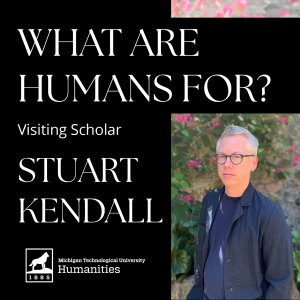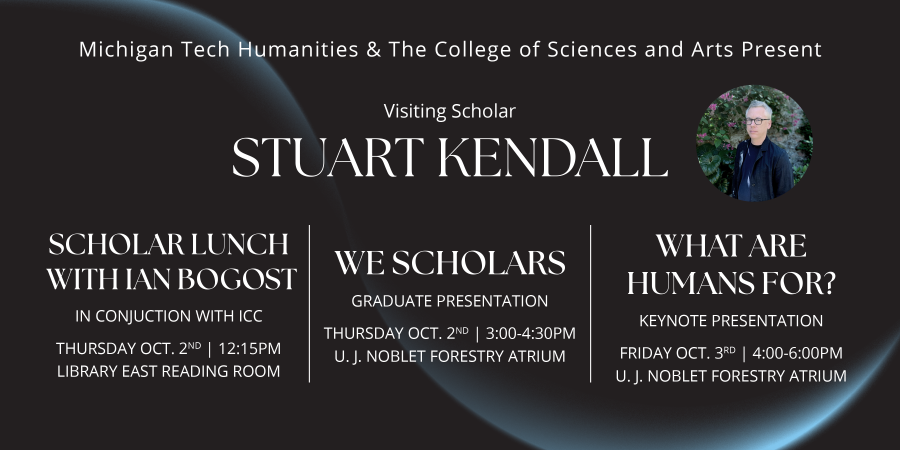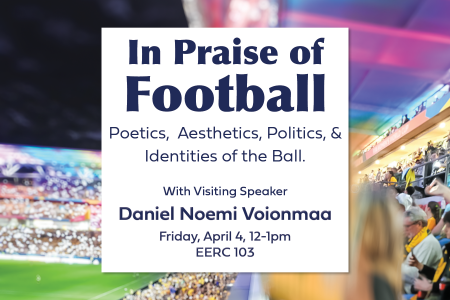
The Department of Humanities, together with the College of Sciences and Arts, are pleased to welcome Dr. Stuart Kendall to campus on October 2nd and 3rd for a series of presentations, classroom visits, and scholarly discussions related to interdisciplinary scholarship.
Dr. Kendall’s keynote presentation, titled What Are Humans For? will take place on Friday, October 3rd, at 4:00pm in the U. J. Noblet Forestry Building Atrium. The talk will focus on the present and future of interdisciplinary study, examining the strategies of several exemplary interdisciplinary thinkers. This public talk is free and open to all.
Leading up to this presentation, Dr. Kendall will be joined by Institute of Computing and Cybersystems guest, Dr. Ian Bogost, for a Scholar Lunch discussion on Thursday, October 2nd, at 12:15pm in the Library East Reading Room*. All are welcome.
Next we invite graduate students and faculty of the Colleges of Sciences and Arts and Computing, and across campus, to a presentation by Dr. Kendall titled We Scholars, which aims to center the human within interdisciplinary study and research. This talk will take place on Thursday, October 2nd, at 3:00pm in the U. J. Noblet Forestry Building Atrium.
Abstract for What Are Humans For?
Recent and profound technological and environmental changes have brought about a paradigm-shift in the production, consumption, and legitimation of both knowledge and know-how. These changes have in turn challenged many of our social institutions and traditional disciplines. Rather than reiterating proposals made from the perspective of a specialized discipline, this lecture will examine the strategies of several exemplary interdisciplinary thinkers whose modes of thought sought to embrace exploration and change: Ivan Illich, Vilém Flusser, and Gregory Bateson, among others. One goal will be to relocate questions of art and technics, as well as those of disciplines and institutions, in models of human experience. In response to challenge and change, the lecture pursues an interdisciplinary inquiry into human experience in order to open a methodological toolbox of strategies and tactics for conviviality.
About Stuart Kendall
Stuart Kendall is an historian of thought and media and design theorist. As a writer, editor, and translator, his books include a critical biography of Georges Bataille, The Ends of Art and Design, Gilgamesh, and a number of edited and translated volumes. He has lectured and run workshops at colleges, universities, conferences, and colloquia nationally and internationally. Teaching appointments have included the California College of the Arts, Stanford University, Boston University, and SUNY Stony Brook. As an academic leader, he created new majors, coursework concentrations, and assessment tools in interdisciplinary humanities, environmental and animal studies, and media and design history, theory, and criticism. His core interests include problems in ecological consciousness, embodiment, and communications media.
*if the East Reading room is unavailable due to ongoing classroom renovations, Scholar Lunch will take place in the U. J. Noblet Forestry Building Atrium


